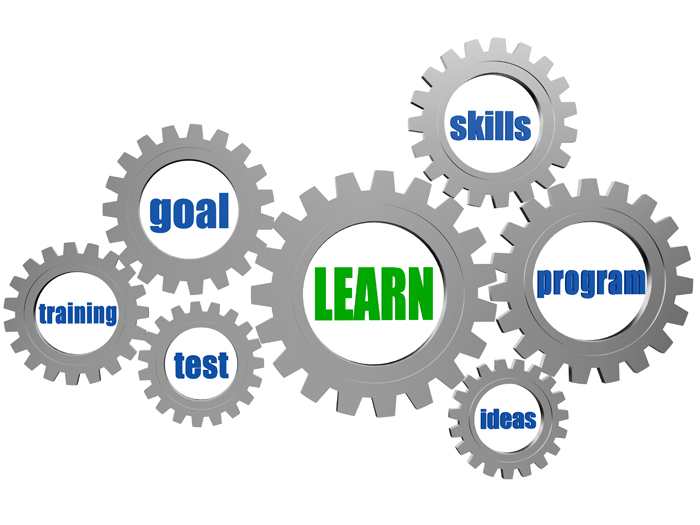
Proceeding in two ways, he identified the problem. With a questionnaire he asked all members of the sales staff precisely what they were doing. Second, Feeney went into the field and observed real sales calls. The questionnaires and observations revealed that too few calls were resulting in "observable actions." This specific act (such as writing a letter, calling a supplier, or signing a routing order) would lead to a sale.
After this concrete outcome was identified, Feeney employed the principles of chaining to identify the behaviors required to secure an observable act from the client. Using tape recordings of hundreds of sales presentations, Feeney worked backward from the desired terminal behavior in a step-by-step analysis of specific sales behaviors. The chain of essential behaviors that were identified included determining if the client was a viable customer, meeting with the decision maker, probing for needs, probing for objections, and asking for an observable action,?
Next Feeney developed a 40-hour programmed instructional package consisting of tape recordings and a workbook to shape each of the essential behaviors in the chain. Each of the modules was tested in the field. Those that worked were retained, and those that failed were revised. To make the training relevant and to make its application to the field as wide as possible, real-life examples taken from the observational tapes were used.
Most programmed instructional packages teach concepts about a skill, such as "A salesperson should probe for customer__ (Answer: needs.)" At Emery, the program was designed to teach a skill:
How to perform with a real customer
For example, after listening to a customer making an objection, the participant would be asked to identify the need expressed. Beginning with top management, personnel from all levels in all divisions of Emery went through the training. By the time the salespeople were trained, everyone at Emery knew how to sell the same way,
A post-call analysis procedure was introduced to maintain the new sales behavior. At the end of each call, regardless of the outcome, the salesperson was required to use the principles learned during training to systematically analyze and self-reinforce performance. Sales managers were trained to reinforce good sales performance and thorough and honest self-analysis. To evaluate effectiveness, the frequency of observable actions was monitored. The results indicated that in the first full year of operation the rate of observable actions tripled.
The Emery Air Freight program illustrates the step-by-step process of putting together a training program. Feeney specified the problem behavior by asking the salespeople about their calls and by going out into the field with them. He identified the behavior-in-situation: observable actions at the end of a sales call. Obviously, to elicit an observable action, the salesperson must engage in a complex series or chain of behaviors. If the salesperson failed to perform any one of the behaviors in the chain, he or she would fail to obtain an observable action. Therefore, the second step in problem specification was to conduct a functional analysis to identify each behavior in the chain. This, too, was accomplished by observing actual performance (listening to audio tapes of sales calls).
Notice that the problem was clearly defined in terms of an observable outcome. Collecting baseline data requires that the identification of an occurrence of the outcome be unambiguous. The frequency of observable actions was monitored. Evaluation consisted of comparing the frequency of observable actions after the end of the first year with the frequency before the training was instituted. During the training, each behavior in the chain was shaped through a series of programmed instructions. Programmed instructions allowed participants to work individually at their own rate. Built-in feedback provided immediate reinforcement for correct responses and information to improve incorrect ones.
Generalization from the classroom to real-life situations is always a serious problem. Newly acquired behavior not reinforced in the target setting will extinguish rapidly. This is often what happens after training: The behaviors acquired during the training are ignored or, worse yet, are punished in the setting in which they are intended to occur. Usually the problem is simply that the supervisor neglects to reinforce the new learning. More serious is the situation when super visors and other members of the staff engage in (model) and respond to (reinforce) behaviors incompatible with the ones learned in their training.
For such a program to be effective, considerable attention should be devoted to developing a means of generalizing learning to the target setting and then maintaining it at a high frequency level. The Emery Air Freight program did this in four ways. First, examples in teaching and practice frames of the programmed instruction workbook were taken from actual sales calls. The closer the training approximates the target setting, the more likely it will be for generalization to occur. The second generalization technique was to alter the environment so that it became more like the training situation. To do this, Feeney had all levels-beginning at the top-go through the training; in this way, he eliminated conflicting contingencies. A companywide standard for sales calls had been established. The training and top-level support established exactly which sales behaviors were considered desirable. In this way the antecedents were introduced which elicited a particular kind of sales behavior. Third, reinforcement was built into the environment. Sales managers were instructed to use information from the post-call analysis to reinforce appropriate sales behavior. Finally, generalization and maintenance were further facilitated by arranging for self-reinforcement. The post-call analysis required that salespeople analyze their performance after the call.
Not only does this promote self-reinforcement of those sales behaviors performed well, but also it serves to pinpoint areas that need improvement.



